1. The top of the Mavericks in June 2019
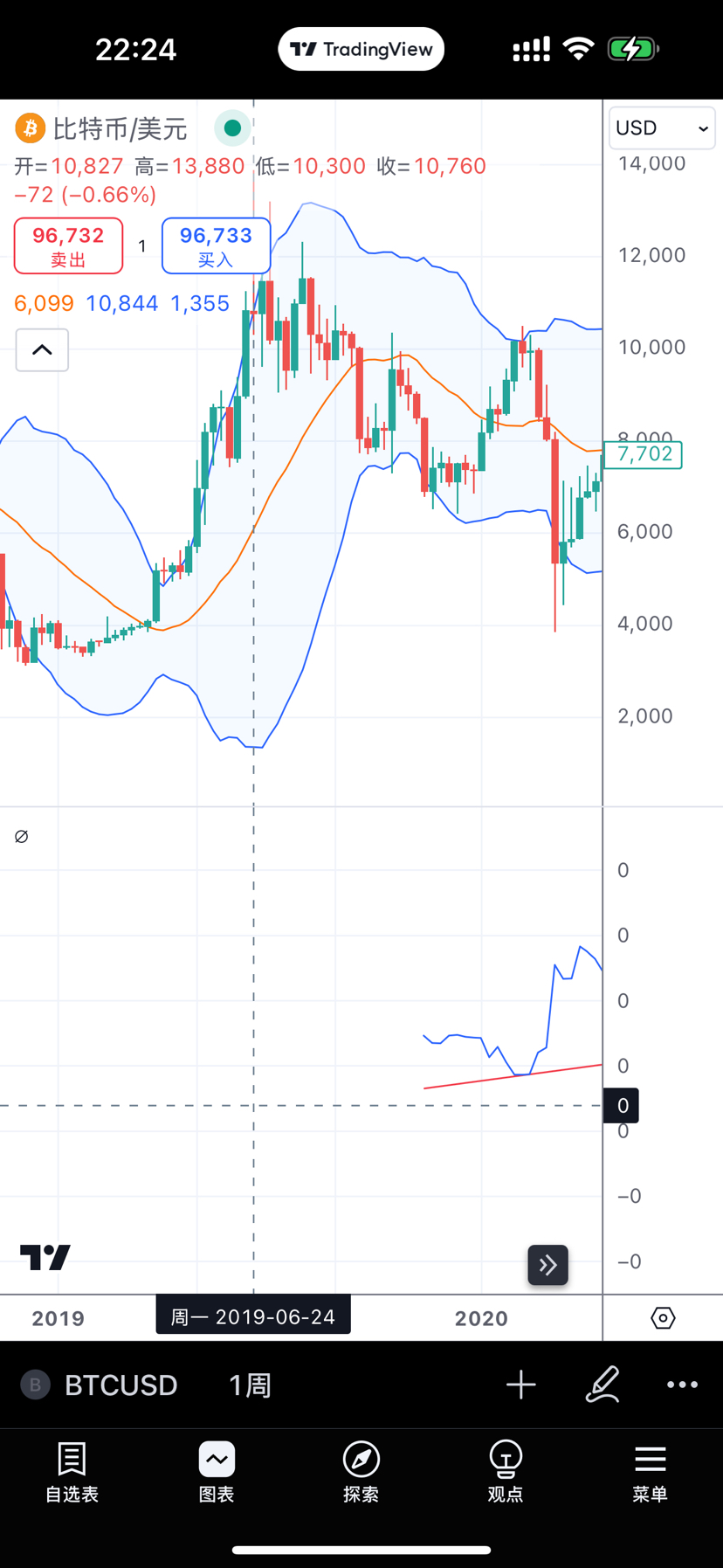
The data in the chart is not recorded, but it was exhausted at that time, and then a weekly downward correction was made. It matches the line.
2. The peak of the calf in February 2020
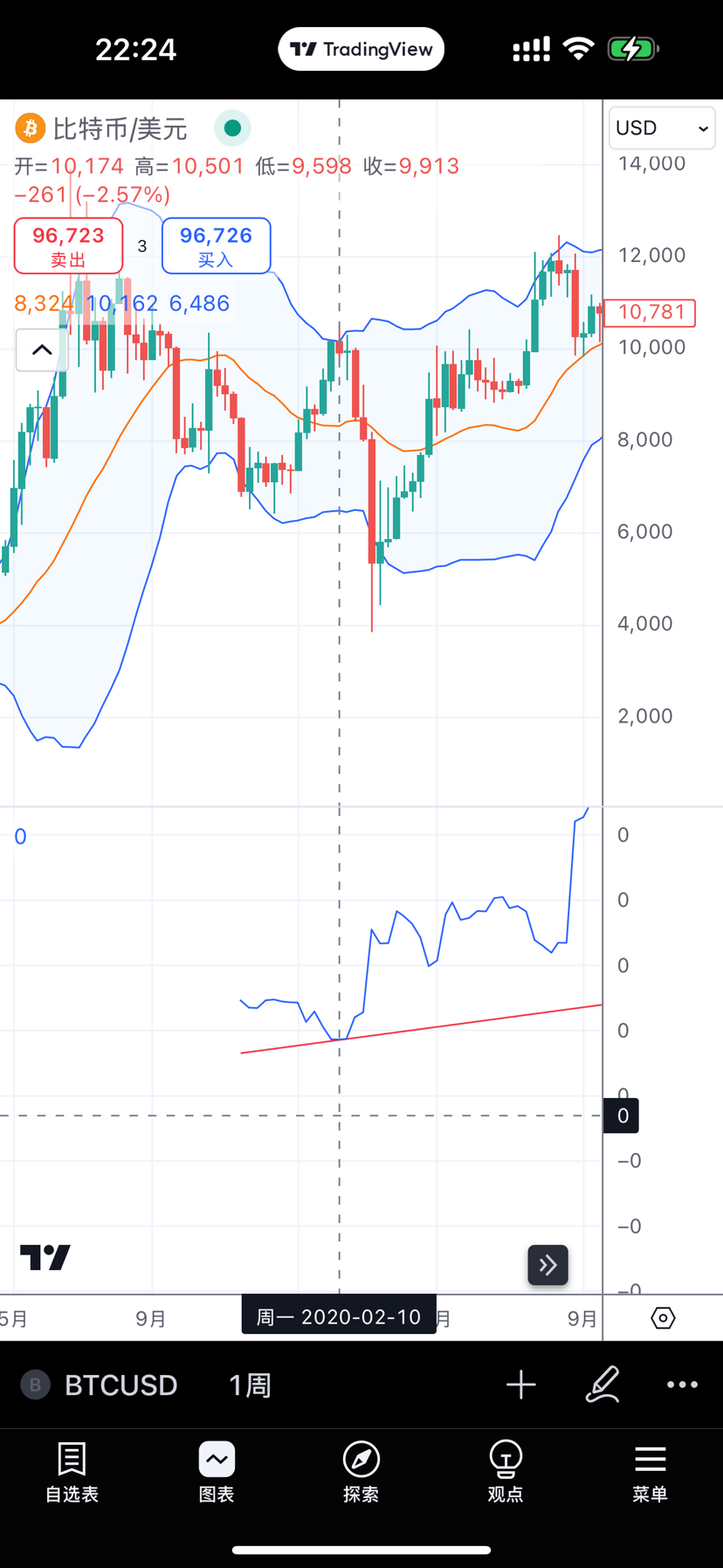
Regardless of the tight capital situation, the market was forced to the peak. However, the outbreak of the epidemic led to a sharp correction below the 312-week line.
3. The bull peak in February 21
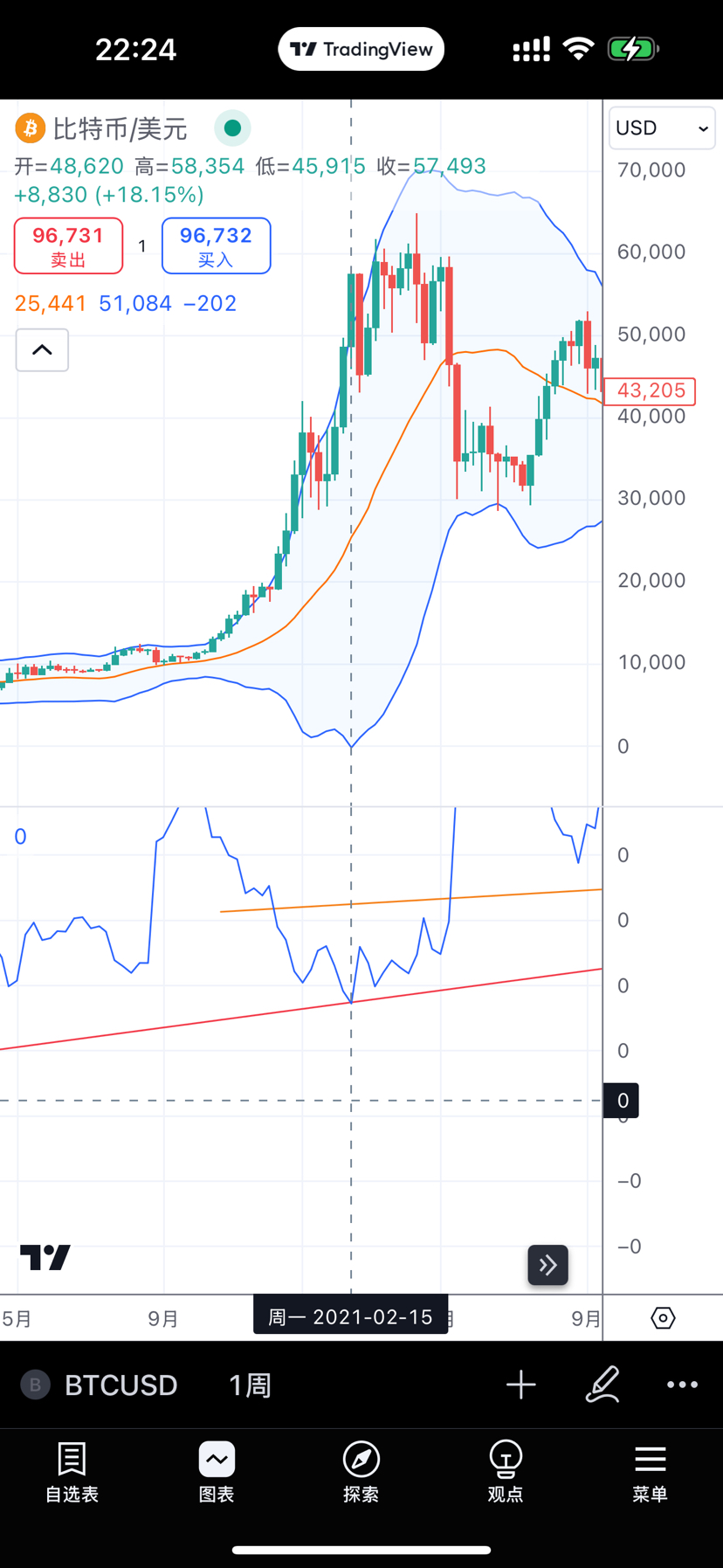
As the epidemic began, the Federal Reserve flooded the market with money, and Bitcoin rose to 58. At this time, liquidity dried up again, and then it fell back to the lower track of the 519-week line.
Fourth, the second top in November 21
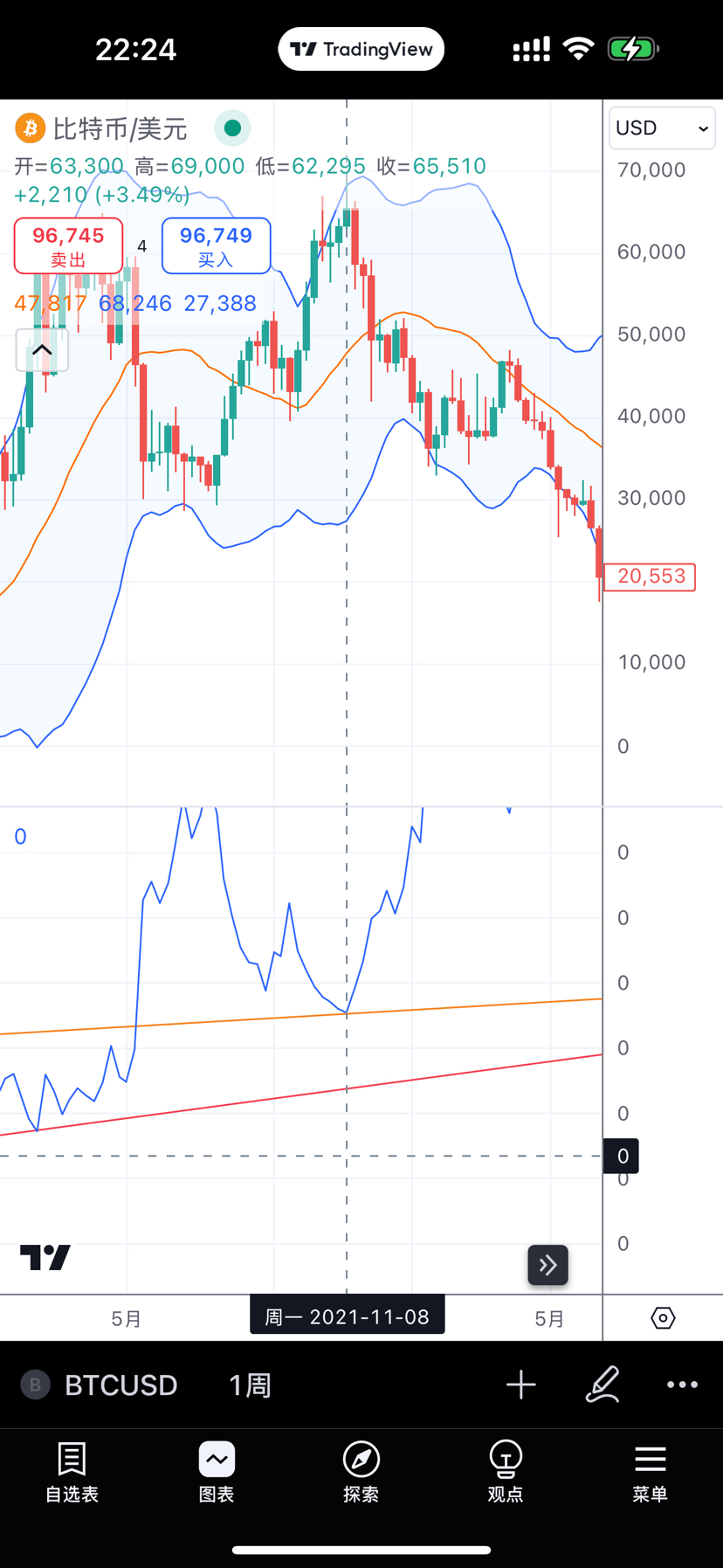
This time the liquidity was not used up, which was related to the tightening of the Federal Reserve's policy. After that, the bull market was interrupted and entered a bear market, repeatedly falling below the lower track of the weekly line.
5. March 24, the top of the Mavericks
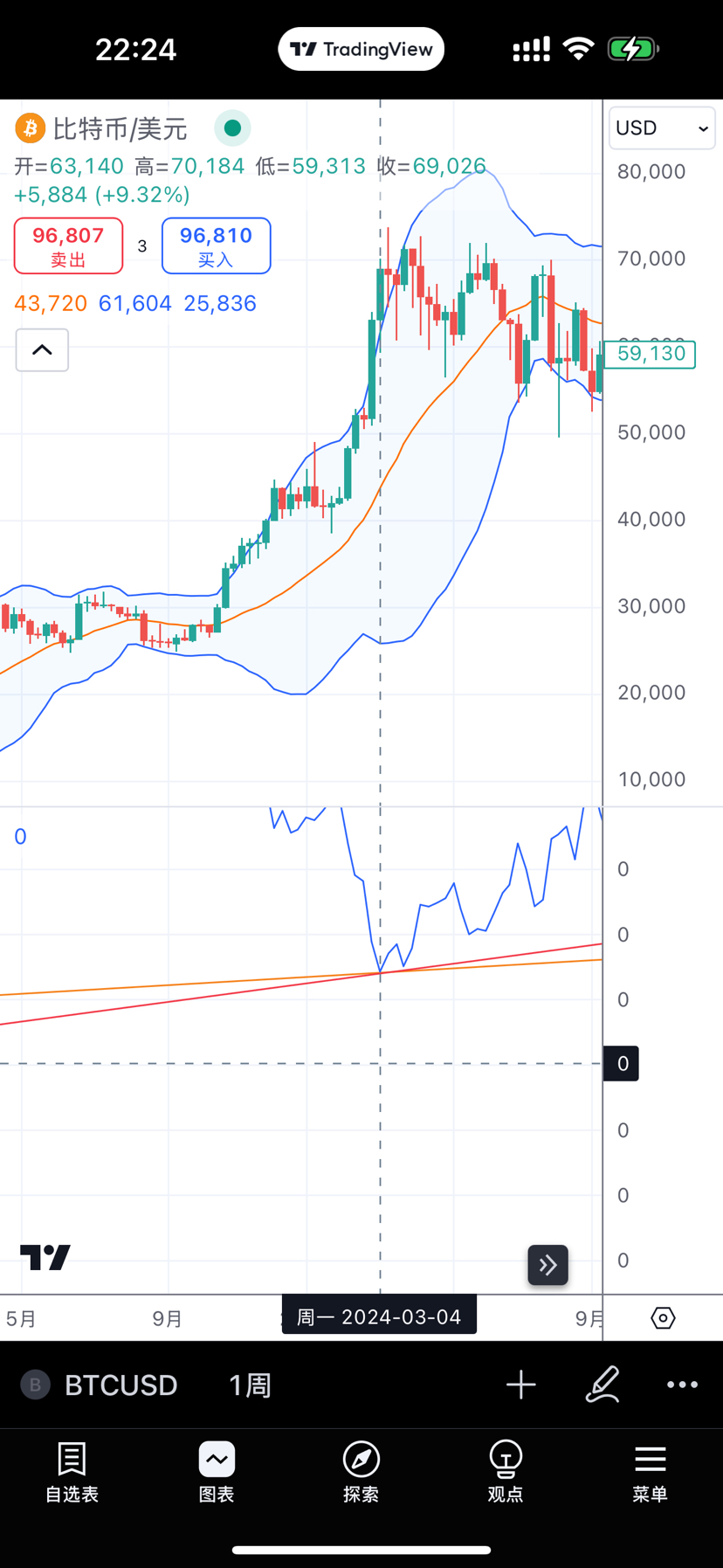
The entire bear market has accumulated a steady stream of liquidity, so it has increased fivefold in 2023 and 2024, reaching the peak of the bull market, when liquidity has dried up again. Since there has been no halving, interest rate cuts, or additional issuance, the market continues to fluctuate and the weekly line is repeatedly adjusted downward.
6. The Mavericks peak in November 24?
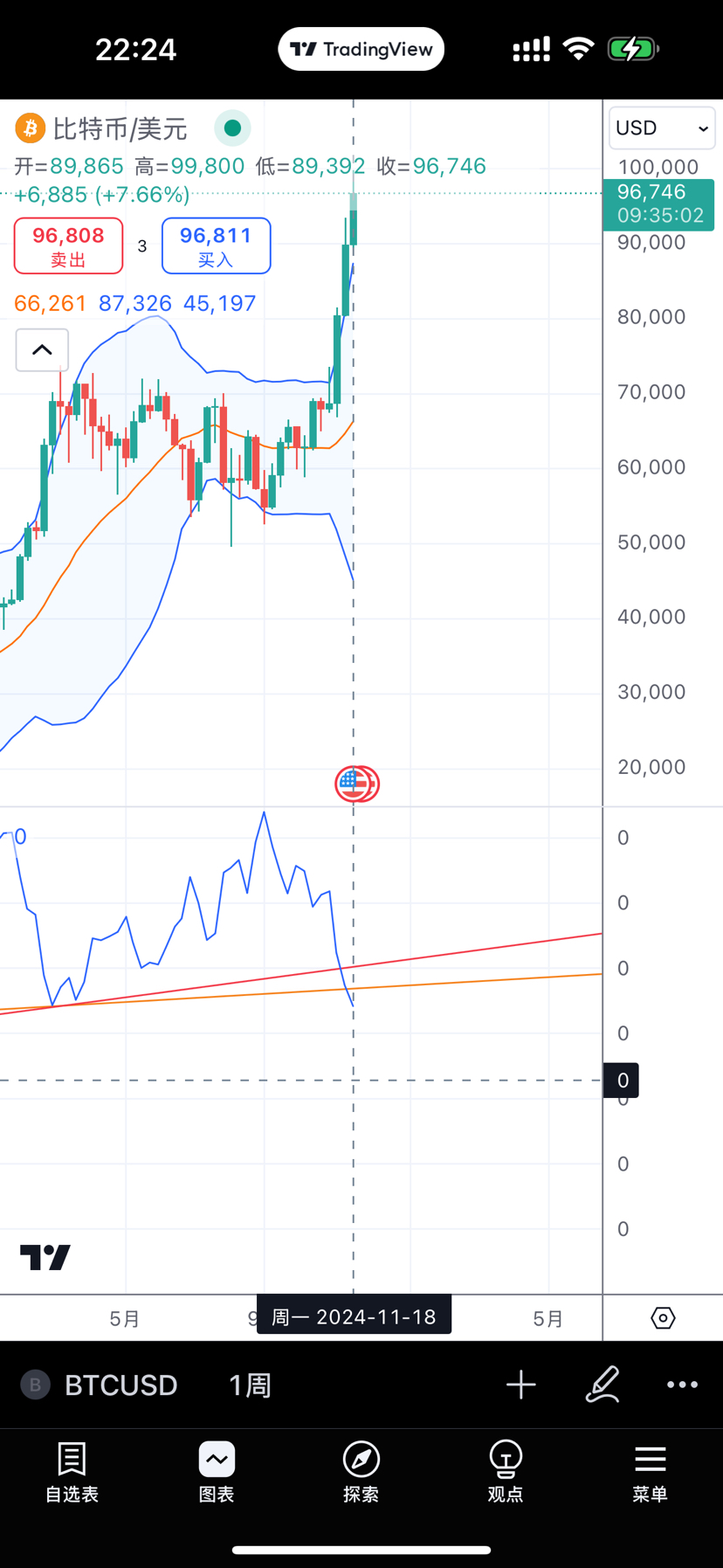
After eight months, the wash-out is over and the bull market is coming to a peak again? At this time, liquidity is further exhausted, so what will happen in the future? Will the weekly line be a big wash-out?
Judging from the above historical process, there is a chance to hit a bull peak every eight months to a year. So from July to November next year, there will be a chance for the last bull peak attack, which will be around 200,000? Or 150,000?
Then, it is very likely that there will be repeated fluctuations and pullbacks to the lower track of the weekly line, followed by the last bull-to-rabbit trend.
That's all! $BTC